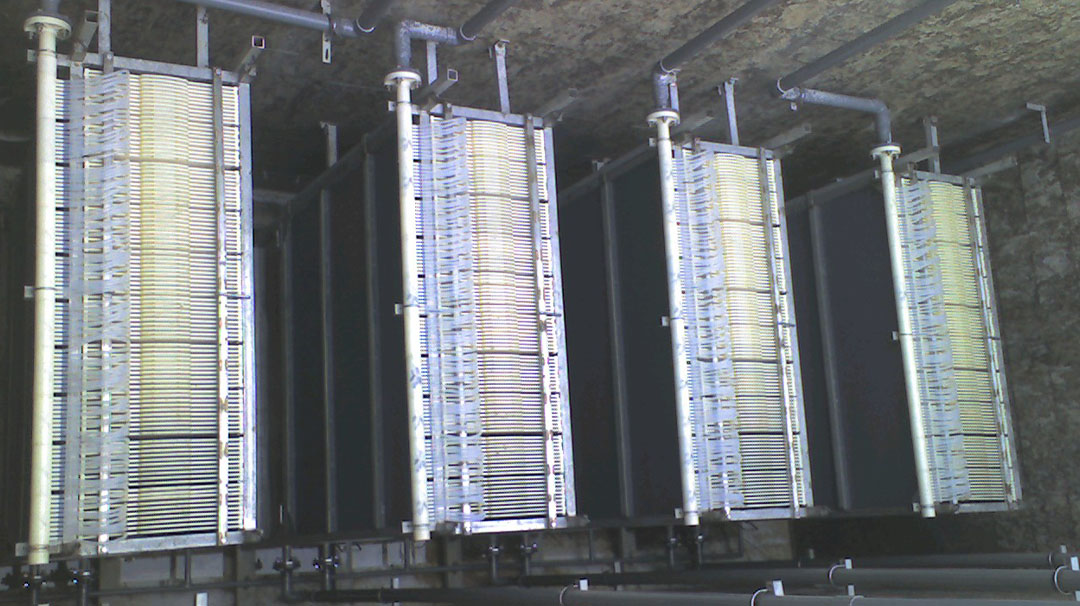
As the world moves towards more sustainable infrastructure, wastewater treatment has become a critical aspect of environmental conservation. In this light, the need for innovative solutions and technologies for wastewater management has arisen. One of the solutions being used widely is the Membrane BioReactor (MBR) system, which employs advanced membranes such as the flat sheet MBR membrane. But what exactly is the working principle of this membrane, and how does it contribute to efficient and effective wastewater treatment? Today, we will delve into the details, providing insights about the working principle of flat sheet MBR membranes, and give you everything you need to know.
MBR is a patented technology that combines traditional activated sludge treatment with a membrane that acts as a barrier between the treated wastewater and the sludge. The MBR system’s membranes can be either flat sheet or hollow-fiber, and their mode of operation differs. Here, we will focus on the flat sheet MBR membrane’s working principle.
The flat sheet MBR membrane consists of a thin sheet of material with pores, commonly made of polymers such as Polyethylene (PE), Polyvinylidene Fluoride (PVDF), and reinforced Polyester (PET). The pores in the membrane are tiny, ranging from 0.1 to 0.4µm, which means they can filter out most solids, bacteria, and viruses in the wastewater. When treated wastewater enters the membrane, the pores filter out contaminants, making it safe to reuse.
The working principle of the flat sheet MBR membrane is based on the principle of pressure-driven filtration. The membrane is installed vertically in the bioreactor, and when the wastewater is added, it flows through the membrane. As the wastewater flows through the membrane’s surface, contaminants get trapped and remain on the surface. The wastewater, now free of contaminants, passes through the membrane and leaves the bioreactor. At this point, the treated wastewater meets the required discharge standards and can be reused.
Maintaining the flat sheet MBR membrane is also essential to ensure optimal efficiency. Usually, the membranes are backwashed routinely to remove any accumulated solids that may have clogged the pores, reducing the membrane’s permeability. Furthermore, chemical cleaning may also be required to remove any contaminants that may have accumulated on the membrane surface.
Flat sheet MBR membranes provide a dependable solution to wastewater treatment, making it safe for reuse. The working principle of flat sheet MBR membranes is intricate, but its application is straightforward. With a focus on maintaining the membrane, it can function efficiently, and you can enjoy high-quality output while reducing environmental pollution. So if you are considering using MBR technology for your wastewater treatment plant, the flat sheet MBR membrane is a solid choice. Peier Membrane is an MBR flat sheet membrane supplier that provides reliable and high-quality membranes, ensuring your wastewater treatment processes are top-notch.
Abuot Jiangsu Peier membrane
Jiangsu Peier membrane corp.,Ltd(Stock Code: 836744) was established in 2007 with a registered capital of 48 million Yuan, referred to as “Peier membrane industry”.
It is a high-tech enterprise focusing on the R&D, production, manufacturing and service of MBR flat sheet membrane products. Its Peier Product category as below:
- Flat Sheet Membrane Element
- Flat Sheet Membrane Element-Single Nozzle
- Flat Sheet Membrane Element-Double Nozzle
- Flat Sheet Membrane Element-3D Soft Support
- Flat Sheet Membrane Element-Renovated Membrane
- Flat Sheet Membrane Module
- Flat Sheet Membrane Module-Module-Single Nozzle
- Flat Sheet Membrane Module-Module-Double Nozzle
- Flat Sheet Membrane Module-2S(Double Deck)
- Flat Sheet Membrane Module-3S(High Flux)
- Flat Sheet Membrane Module-Mini Module
- MBR System
- MBR System-Laboratory Test Equipment
- MBR System-Pilot Equipment
- MBR System-Package System
Peier membrane always adheres to R&D and cooperation with well-known universities at home and abroad, such as Tsinghua University, Sydney University, Nanjing University of technology, Changzhou University and Jiangnan University.
It is the editor in chief of the national industry standard HY/T252-2018 “submerged flat membrane element for water treatment”.
At present, it has 6 invention patents, 46 new utility patents, 1 appearance patent and 4 software works.